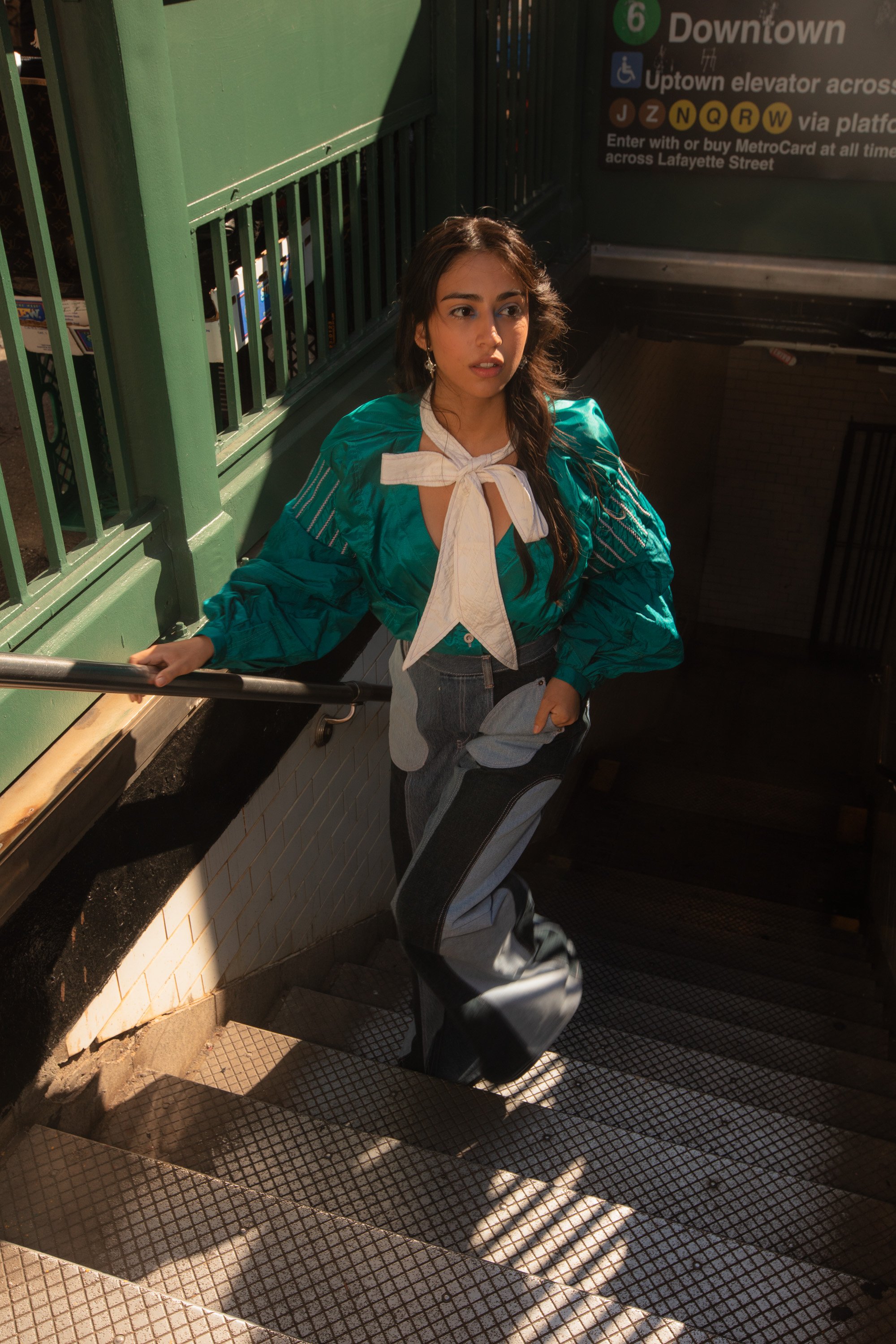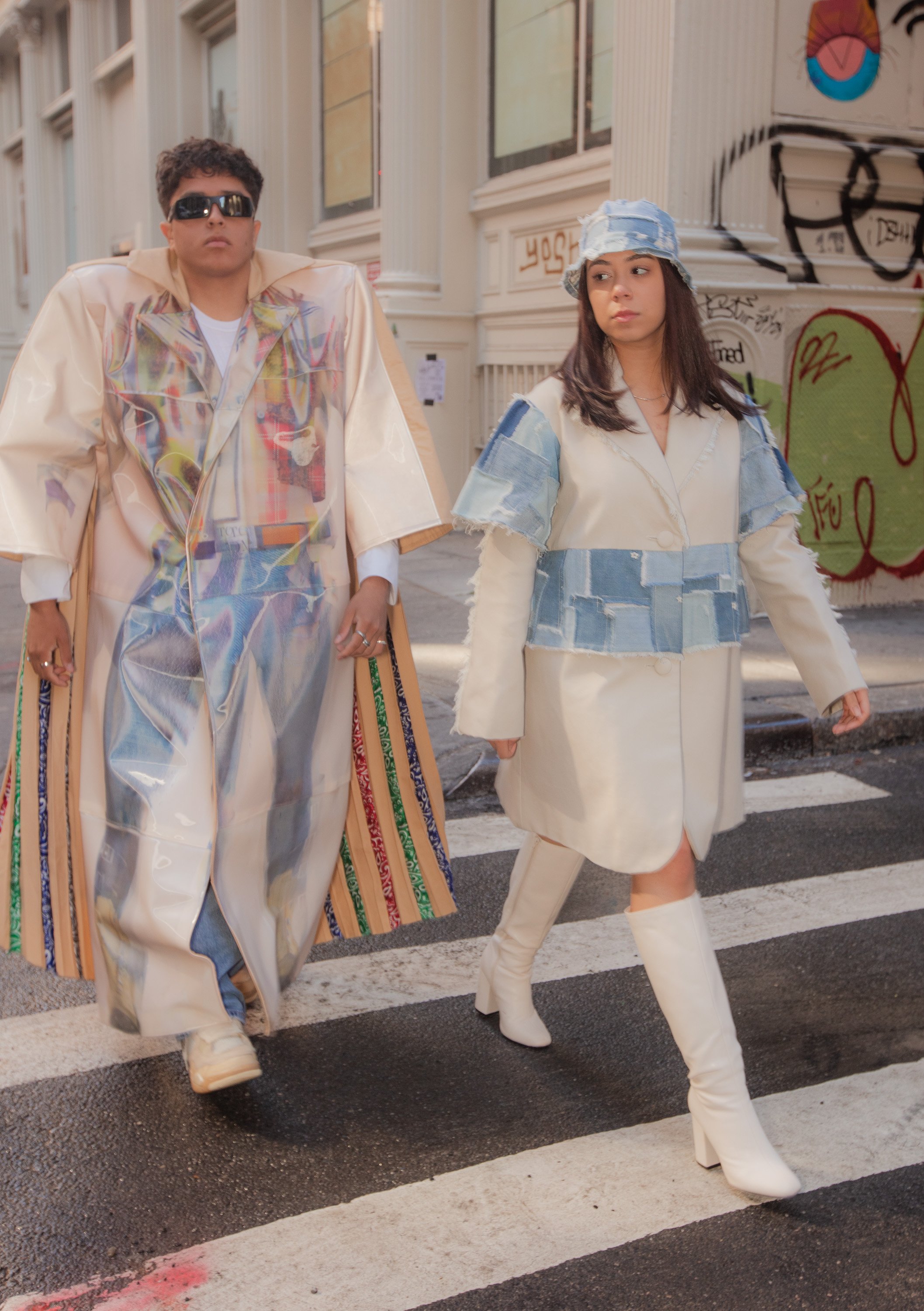Strutting the Streets
Throughout history, streetwear has reflected the spirit of the times and been an art movement in itself, especially for the Black Community.
The legacy of Virgil Abloh is shaped by the way he disrupted and revolutionized luxury fashion. Virgil Abloh, founder of Off-White and former creative director of Louis Vuitton, who sadly passed away last year, was able to merge street style with luxury fashion. The impact of Virgil can be measured by seeing how street style was on the fringes and not in typical mainstream fashion.
Transport yourself into the early '80s in New York; Hip hop is emerging, and block parties are happening in The Bronx. DJ Grandmaster Flash and Grand Wizard Theodore are playing new beats on their turntables, the crowds are loving it, and a new genre is being born. Black communities were bonding over a shared love of sound, but the music was just the beginning. Quickly, a classic look is arising for the block party events: the Adidas tracksuit and a Kangol Bucket hat paired with Adidas Superstars. A chain as an accessory if you want to stand out from the others at the party. The fashion trends quickly became just as important as the music attendees.
The roots of style originated with Run DMC wearing Adidas tracksuits and laceless shoes. Then by the late '80s, Public Enemy and Queen Latifah supported a wave of Black nationalism with colors associated with the movement, such as red, yellow, back, and green. In the '90s, artists like 2Pac and Notorious BIG dominated the music scene, and songs were about luxury brands: the crowds were now wearing Versace and DKNY. And, by the late '90s, hip-hop stars like Snoop Dogg and Wu-Tang Clan were wearing baggy clothing, sportswear, and trainers — this was the age of 'gangster rap.' At the time, whoever was dominating the music scene, street style shifted in their favor.
Hip-hop style did not always correlate with luxury fashion because it challenged the status quo. Luxury fashion had been established by the rich and, historically, the aristocracy. The hip-hop community allowed individuals to dress down and be comfortable; they were able to create a new style of clothing accessible to ordinary people, which would eventually trickle up and influence high fashion brands. The hip-hop crowd borrowed logos and labels from brands and reinterpreted them for a look that felt authentic to them. Dapper Dan, a Harlem designer, was notorious for featuring Gucci and Louis Vuitton labels in his fun and flashy clothing.
Trench Coat by Brandon Chu
Virgil Abloh becoming the creative director for Louis Vuitton was a significant moment. Someone on the "outside" was allowed "inside" and able to fundamentally shift traditional fashion, representing so much more than a fashion designer. As a person who actively infused himself into the life around him, Virgil was able to master the creative process by using music, fashion, and interior design. Virgil mixed new ideas and reached different ages and cultures due to his fresh vision of fashion. The hip-hop community birthed a completely new style, and Virgil carried this legacy into mainstream culture, highlighting how streetwear is both a movement and an art form. Ultimately, street style is about creativity and expression, empowering individuals to strut the street.
Models: Azalea Cruz, Eva Deming, George Foot, Jessica Garza, Michelle Ceballos
Photographer, Social Media and Public Relations Director: Maddie Paradise
Stylist: Victoria Panzella
Makeup Artist/Hair Stylist, Beauty Director: Gillian Tokar
Videographer, Production and Set Director: Luna Abreia
Editor-in-Chief, Creative Director: Pilar Bradley
Photo Director, Creative Director: Kervens Jean
Editorial Assistant: Nadia Adams
Fashion Director: Monica Robles
Managing Editor: Nova Krasner
Graphic Designer: Suma Deshpande
Writer: Amber Weir
Fashion Editor: Audrey Tobin







